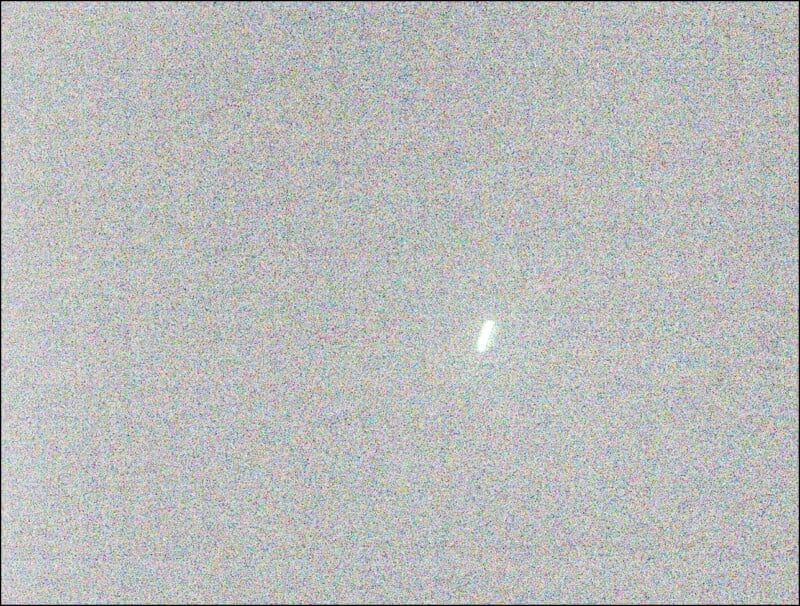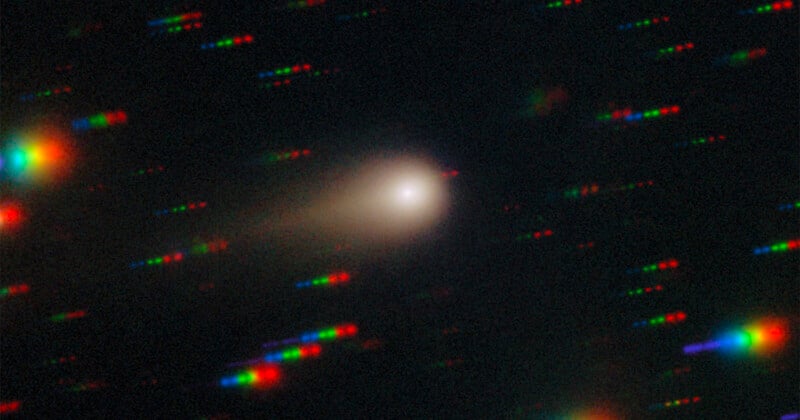 NASA’s Mars Perseverance rover acquired this image using its onboard Right Navigation Camera (Navcam). | NASA/JPL-Caltech
NASA’s Mars Perseverance rover acquired this image using its onboard Right Navigation Camera (Navcam). | NASA/JPL-Caltech
NASA’s Perseverance rover captured an unusually shaped object flying through the Martian sky on Saturday — and it’s not yet confirmed what it is.
The object was caught by Perseverance’s Right Navigation Camera (Navcam), and chatter about whether the object is an alien spacecraft began online immediately. Alas, scientists are not convinced.
Unfortunately, the ongoing U.S. government shutdown means that NASA’s workforce is currently at home, apparently unable to put out a statement about the object.
However, NASA had been closely following the interstellar comet 3I/ATLAS — only the third known object from outside the solar system to be discovered — and had previously said it plans to use Perseverance to monitor it.
Furthermore, the date of the photo (October 4) coincides with when 3I/ATLAS was expected to make its closest pass to Mars.
 NASA’s Mars Perseverance rover acquired this image using its onboard Right Navigation Camera (Navcam). | NASA/JPL-Caltech
NASA’s Mars Perseverance rover acquired this image using its onboard Right Navigation Camera (Navcam). | NASA/JPL-Caltech
In the absence of any information from NASA, Harvard astronomer Avi Loeb wrote a blog post explaining that at the time the two photos were taken, 3I/ATLAS was roughly 38 million kilometers (23.6 million miles) from Mars.
Loeb did some rough calculations and estimates the cylindrical shape in the sky is approximately 31,000 miles long. But he says that 3I/ATLAS isn’t that big; instead the comet was elongated because of the camera’s “long integration time.”
“In conclusion, the stripe in the Navcam image must have resulted from stacking hundreds of Navcam images over a total time interval of about ten minutes. 3I/ATLAS would have looked like a circular spot for an individual snapshot, which has a maximum exposure time of 3.28 seconds for Navcam,” Loeb writes.
“If the Navcam images represent single snapshots with an exposure time below 3.28 seconds, then the brightness and angular length of the observed source imply that it is not 3I/ATLAS. In that case, the source might be much closer to the camera — capable of being smeared into an elongated image with a smaller spatial size and a smaller speed.”
Futurism notes that there should be confirmation soon, as NASA’s Mars Reconnaissance Orbiter also got an image of the comet, but that is still unreleased.
 International Gemini Observatory/NOIRLab/NSF/AURA/Shadow the Scientist
International Gemini Observatory/NOIRLab/NSF/AURA/Shadow the Scientist
Image Processing: J. Miller & M. Rodriguez (International Gemini Observatory/NSF NOIRLab), T.A. Rector (University of Alaska Anchorage/NSF NOIRLab), M. Zamani (NSF NOIRLab)
The interstellar visitor has already been imaged by NASA’s Hubble Space Telescope and then a few weeks later by the Gemini Multi-Object Spectrograph (GMOS) on Gemini South in Chile, above.

